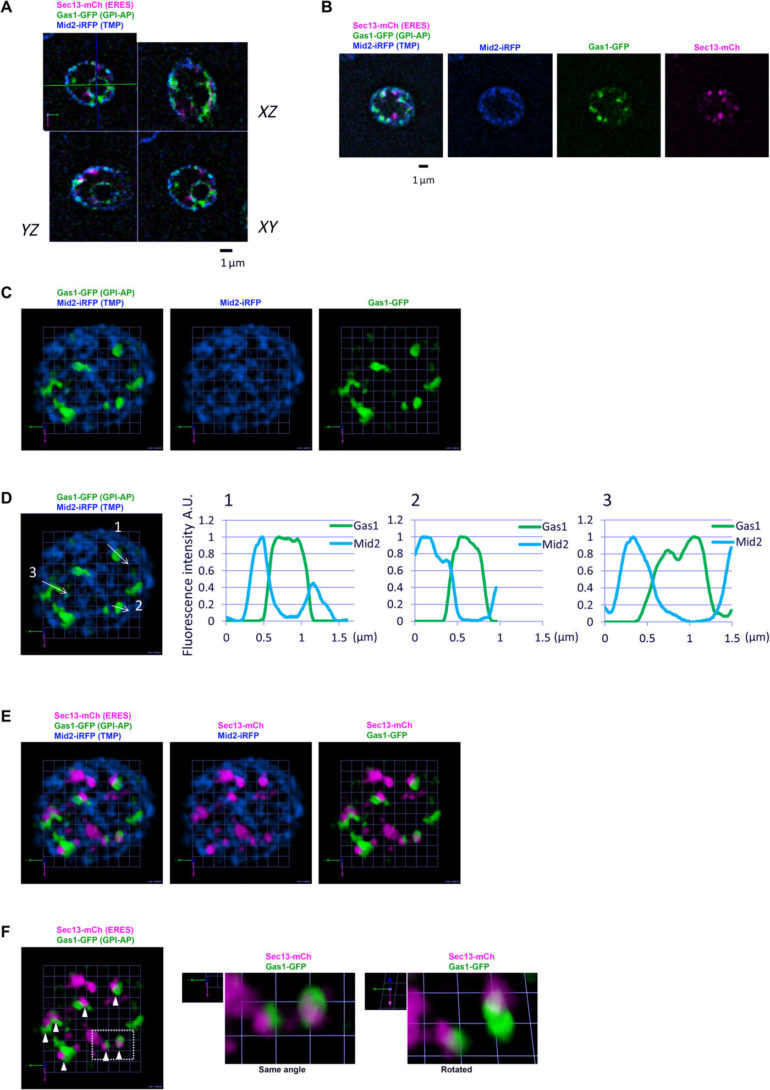Researchers have observed how lipids distribute proteins within cells, a discovery that could open the door to understanding the causes of protein transport related diseases, such as cancer or neurodegenerative diseases.
An international team of scientists, coordinated by the Seville Institute of Biomedicine (IBiS) and the University of Seville has solved one of the hitherto unresolved enigmas of basic biology: how exactly do lipids distribute proteins within a cell? To do this, they used a new, completely innovative microscopy technology, which they applied to “mutant” cells they designed in their laboratory.
This discovery represents a major advance in understanding how proteins are distributed in cells to perform their vital functions, and could open the door to understanding the causes of diseases associated with failures in protein distribution at the cellular level: from cancer to neurodegenerative diseases, such as Alzheimer’s.
The study was carried out by the Department of Cell Biology’s Membrane Trafficking research group, part of the Faculty of Biology of the University of Seville and the IBiS, led by Professor Manuel Muñiz Guinea, in collaboration with the universities of Hiroshima (Japan), Geneva and Fribourg (Switzerland). The RIKEN Institute in Japan, where the “Super-resolution Living Cell Microscopy” Laboratory is located, also participated in this project. This is a unique facility in the world which conducted analyses using a high resolution fluorescence microscope that allows the study of very fast and dynamic processes in living cells on an incredibly small scale.
As Manuel Muñiz explains, “the cell is the basic unit of life and, at the same time, an extremely complex and sophisticated machine in which thousands of proteins, among other components, are strategically located in different compartments where they carry out cellular functions.” The cell must ensure that its proteins are properly distributed to their place of function, because if this fails and they do not reach their destination, the proteins either stop working or get out of control, causing diseases ranging from genetic syndromes to cancer or neurological diseases. Therefore, it is important to investigate how proteins are distributed towards their functional destination.
Many years ago it was suggested that, in addition to cells’ conventional protein transportation machinery (whose discovery received the Nobel Prize for Medicine in 2013), the lipids that make up the cell membranes may also play an additional role in the distribution of proteins within cells. This work by the Seville researchers solves this enigma of basic biology, demonstrating for the first time how lipids can distribute proteins at the cellular level.
Molecular exit doors
The proteins are manufactured in a compartment of the cell and then have to be distributed correctly by exiting through specific “doors.” In this study, scientists from Seville discovered that membrane lipids are responsible for selecting and directing certain proteins to the correct exit doors.
To make this discovery, they designed a “mutant cell” that was programmed to manufacture a shortened version of cellular lipids called ceramides. The researchers suspected that the length of these lipids could be a determining factor in choosing the appropriate exit door.
“And that’s exactly what we found,” explains the IBiS researcher. “Thanks to the short ceramides we generated, we were able to demonstrate for the first time that lipids are only able to guide proteins during transport if they are the right length. Moreover, by using such a powerful ‘super microscope’ we were able to capture for the first time on an ultra small scale andin vivohow proteins exit through these molecular doors.”
Yeast model
As a curiosity, this study was carried out using yeast cells (the same unicellular fungus used to make bread, beer and wine) as a model organism, “because, being eukaryotic cells just like ours, they perform the same basic cellular processes in a very similar way, so the observations can be extrapolated to human cells,” explains the University of Seville professor.
However, because they are also simpler and can be genetically manipulated very effectively, “yeast cells are an excellent model to understand the fundamental workings of the human cell and what causes disease, as demonstrated by the fact that several Nobel Prize for Medicine have been awarded to researchers who used this microorganism in their studies, including Paul Nurse or Randy Schekman.”
In conclusion, Manuel Muñiz explains that the article published in Science Advances “has also served to demonstrate that lipids and proteins influence each other to self-organize together within the cell,” and points out that the mechanism they have discovered and used for this “could be used in other processes, such as the entry and exit of certain viruses from the cell, as well as in the formation of exosomes (extra-cellular lipid vesicles involved in communication between cells, particularly in cancer).”
How proteins find their place in the cell
More information:
Sofia Rodriguez-Gallardo et al. Ceramide chain length–dependent protein sorting into selective endoplasmic reticulum exit sites, Science Advances (2020). DOI: 10.1126/sciadv.aba8237
Provided by
University of Seville
Citation:
How lipids distribute proteins within cells (2021, January 29)
retrieved 31 January 2021
from https://phys.org/news/2021-01-lipids-proteins-cells.html
This document is subject to copyright. Apart from any fair dealing for the purpose of private study or research, no
part may be reproduced without the written permission. The content is provided for information purposes only.



